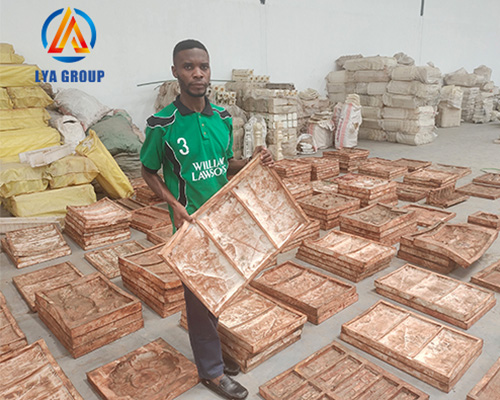Several techniques used to produce artificial stone molds
News 2024年2月27日 152

Mold production techniques: There are several techniques used to produce artificial stone molds, including:
Casting: The mold material, such as silicone or polyurethane, is poured into a mold frame or container that contains a master mold or prototype of the desired shape. The material is allowed to cure or solidify, forming the final mold.
3D Printing: With advancements in technology, 3D printing can be used to create artificial stone molds. This technique allows for intricate and complex mold designs to be produced with precision.
CNC Machining: Computer Numerical Control (CNC) machines can be used to carve molds out of solid blocks of materials like polyurethane or aluminum. This method is suitable for creating molds with high precision and intricate details.
Texture and surface treatments: Artificial stone molds can be designed to replicate various textures and surface finishes found in natural stone. Manufacturers can incorporate textures like rough, smooth, weathered, or even replicate the appearance of specific types of stone, such as granite or limestone. Surface treatments, such as sandblasting or acid etching, can further enhance the texture and appearance of the artificial stone.
Mold customization and flexibility: Artificial stone molds offer flexibility in terms of customization. Manufacturers can create molds to produce a wide range of products, including different shapes, sizes, and thicknesses. This customization allows for the production of tailored artificial stone products to meet specific design requirements.
Mold release systems: Mold release systems are used to facilitate the demolding process and prevent the artificial stone from sticking to the mold. These systems can include the use of release agents, such as silicone sprays or liquid release agents, which create a thin barrier between the mold and the casting material. Mechanical or pneumatic demolding methods can also be employed to aid in the separation of the artificial stone from the mold.
Mold storage and handling: Proper storage and handling of artificial stone molds are essential for maintaining their quality and longevity. Molds should be stored in a cool and dry environment to prevent degradation or warping. Additionally, careful handling during the casting process helps prevent damage to the mold and ensures consistent results.
Environmental considerations: Some artificial stone molds are designed with environmental considerations in mind. For example, there are molds available that use recycled materials or have reduced waste production during the manufacturing process. These molds can contribute to more sustainable production practices in the artificial stone industry.